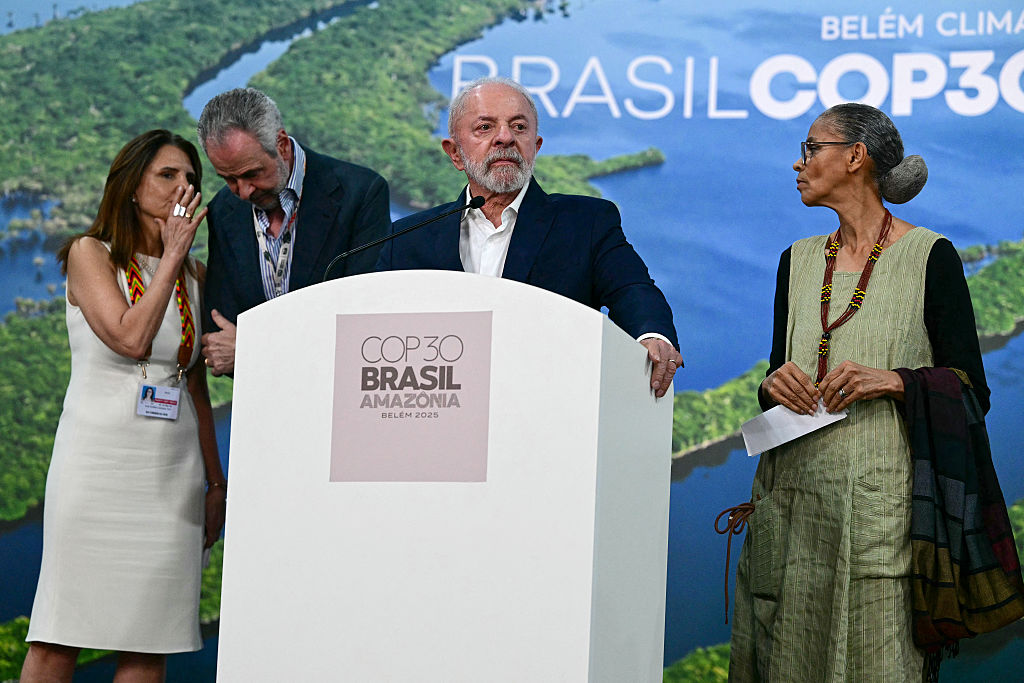A Tense Peace in Peru's Amazon
A Tense Peace in Peru's Amazon
Violence in Bagua, Peru claimed dozens of lives when indigenous groups clashed with police forces because of a dispute over laws related to land and resources. Conflicting reports emerged over which side is responsible, the number of fatalities, and foreign involvement.
A deadly clash broke out between indigenous protestors and Peruvian police forces June 5 in the Andean country’s northern Amazonian region. By Sunday, government troops brought about order in Bagua, the conflict’s epicenter. But the state of peace may be tenuous at best, given indigenous communities’ continued protest of decrees they say weaken their ownership of land and resources in the biologically diverse jungle region. Moreover, the ramifications of the clash could be international; Peruvian officials suggest that foreign interests may have played a role.
Protesters had demonstrated for several weeks, blocking roads and waterways and slowing oil production while demanding Peru’s Congress overturn nine legislative decrees. The decrees, approved after the U.S.-Peru trade deal, open the door to private investment and development in the Amazon. As The Wall Street Journal reports, the situation put Peruvian President Alan García between a rock and a hard place: “[G]iving in to protester demands would make García seem weak and cast a cloud over a recently signed free-trade agreement” with Washington, but remaining inflexible on protestor demands “could further radicalize the population in an area where the García administration is particularly unpopular.” Despite Peru’s relatively strong economic showing in recent years, García has been plagued by low approval ratings.
Reports conflict about the violence, from how it began to the number of fatalities. The Inter-ethnic Association for the Development of the Peruvian Jungle (Aidesep)—an indigenous coalition involved in the protests—accused police helicopters of opening fire on some 2,500 demonstrators in Bagua, reports The Los Angeles Times. However, Peru’s Interior Minister Mercedes Cabanillas said Aidesep’s leader Alberto Pizango, now in hiding following an order for his arrest, led protestors to start the violence. As many as two dozen policemen lost their lives and at least 30 protesters died, though one activist put the latter figure closer to 100. Some say the curfew put in place to restore order prevents searches for the missing or injured, leading to the suggestion the death toll could be much higher than reported.
To complicate matters, the violent clash has taken on an international dimension. On Sunday, García hinted that foreign influence might play a role the conflict, calling the riots “a product of conspiracy” by those opposed to Peru’s progress because of “external interests.” Other officials point fingers at fellow Andean countries Venezuela and Bolivia. A Peruvian congressman told The Washington Times that evidence exists showing Venezuelan President Hugo Chávez may be funding the protesters’ efforts. Another congressman accused Bolivian leader Evo Morales of sending a letter to the Peruvian indigenous movements inciting rebellion. Bloggings by boz puts the Bagua violence into the Peru-Bolivia context, noting that relations were already hurting after Lima granted political asylum to three former Bolivian cabinet members. Peru now accuses La Paz of providing shelter to Aidesep’s Pizango. (Aidesep’s leadership says Pizango is currently in hiding in Lima.). Bolivia has denied Peru's allegations.
Peru’s TV Cultura offers photos of the Bagua violence on flickr. Las Barbujas Recargadas blog posted lists of those killed, wounded, detained, and disappeared in connection with the clashes.








